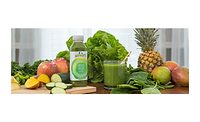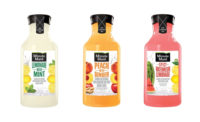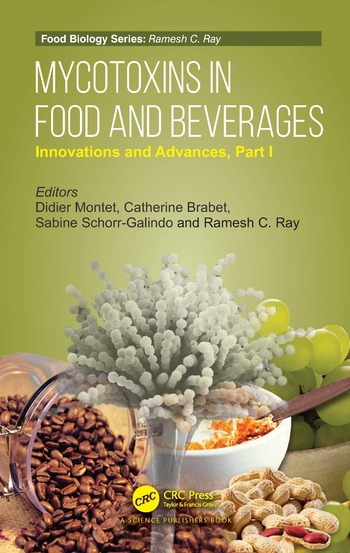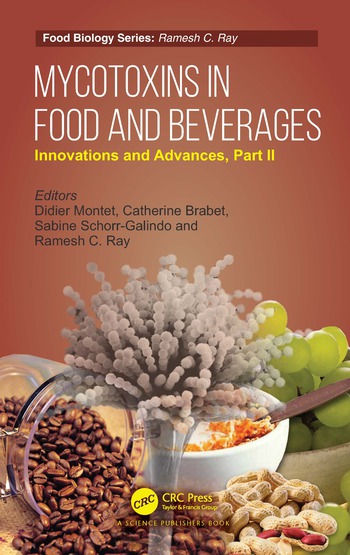Steady growth projected for plant-based antioxidants
Companies introduce new water-soluble ingredients






There’s an idiom that states to “feed a cold, starve a fever.” To stay healthy and prevent illnesses like the common cold, consumers increasingly are turning to foods and beverages that are high in natural, immunity-boosting ingredients like antioxidants. The demand for non-artificial, clean-label products is further driving the use of antioxidants in beverages, experts say. “According to Research and Markets, the Global Food Antioxidants market is forecasted to grow at a [compound annual growth rate] (CAGR) of 5.28 percent during 2016-2021,” says Randal Kreienbrink, vice president of marketing at BI Nutraceuticals, Rancho Dominguez, Calif.
“The rise in the U.S. can be attributed to the aging of baby boomers and the increase in purchasing power of health-conscious millennials,” he continues. “Natural antioxidants are progressively taking more of the market share as American consumers increasingly search for clean-label, healthy ingredients. According to the Nutritional Business Journal, the U.S. Natural and Organic Food and Beverage Market grew by 10.7 percent to $62.7 billion in 2015.”
Adam Cooper, vice president of marketing for Los Angeles-based POM Wonderful, also points to this trend. “Consumers like to know where their food comes from and are increasingly looking for beverages with fewer ingredients that don’t sacrifice flavor for health,” he says. “POM Wonderful perfectly meets these demands by offering consumers the antioxidant power of 100 percent pomegranate juice … that comes from only one source: 100 percent California-grown POM Wonderful pomegranates.
“The super-premium juice category has grown 7 percent in the past year, driven by an increase in overall healthy attitudes toward food and beverages, as well as innovation and expanding offerings in the category,” he continues. “POM has grown plus 18 percent, well above the category norm, [which is] driven by increased demand for our healthy, pure, antioxidant-powered offerings.”
Blueberries are another fruit that contain high levels of antioxidants, fiber, vitamins and minerals, as well as flavonoids, compounds that have been shown to boost brain power, combat cancer and fight heart disease, according to Tom Payne, industry specialist for Thomas J. Payne Market Development, the U.S. Highbush Blueberry Council, San Mateo, Calif.
The domestic fruit also benefits from its appeal to a broad base of consumers, he notes. “Foods like blueberries … have influenced their use in beverages of all types. In fact, blueberries are practically must-haves in people’s everyday diets in many products, but blueberries are especially successful because they are an easy-to-formulate ingredient for product development in all categories, especially beverages,” Payne says. “The health-and-wellness trend is a big influence, but part of the reason is the amazing, across-the-board appeal of blueberries with consumers as well as product developers who appreciate the many types of blueberry products available for use in beverages.”
Providing protection
With backing from respected institutions like the Mayo Clinic, antioxidants are an ingredient for which consumers are actively seeking. In an Internet-driven world, consumers can research the benefits of ingredients like antioxidants to better understand the role they play in their health and well-being, experts say. As a bonus, many foods high in antioxidants also are high in fiber, low in saturated fat and cholesterol, and are good sources of vitamins and minerals, they add.
“Consumers … are not only aware of the specific antioxidants contributing to their health (i.e., anthocyanins, carotenoids and polyphenols), but also that they work synergistically with other phytonutrients to do so,” BI Nutraceuticals’ Kreienbrink says. “Whole foods that inherently contain antioxidants, such as acerola and cranberry, are used in beverages for [their] antioxidative properties. Green tea powders and extracts are also very popular, especially extracts that are standardized to either polyphenols or [epigallocatechin gallate] (EGCG) levels.
“We are also seeing much more interest in our more unique ingredients, like turmeric powder, as consumer taste becomes more open and more studies show their health benefits,” he continues. “Another newer ingredient seeing a lot of interest in the beverage sector is guayusa, more known for its natural caffeine, but also [is] high in polyphenols, a group of antioxidants similar to those found in tea and cocoa. These antioxidants found in a more natural form have many science-based studies to show effectiveness in health protection.”
New SOLUTIONS
Researchers continue to uncover new facts about the versatility and functionality of antioxidants, according to Hideyuki Orikoshi, deputy general manager for the Functional Materials Lab at Osaka, Japan-based San-Ei Gen FFI Inc., a manufacturer of enzymatically modified isoquercitrin (EMIQ).
“EMIQ has been clinically shown to prevent and relieve pollen allergies and is also an enhanced form of quercetin, which is derived from rutin — a flavonol glycoside with strong antioxidant activity that is effective in preventing food deterioration,” he explains. “Rutin is almost insoluble in water and, therefore, problematic for use in beverages. However, San-Ei Gen has enhanced rutin with food-grade enzymes to improve its water solubility resulting in the creation of EMIQ.
“Thus, EMIQ’s strong antioxidant activity and high water solubility allows for superior beverage applicability,” he continues. “[Because] rutin is extracted from the buds and flowers of the Japanese pagoda tree, EMIQ is a natural plant-derived ingredient.”
The company offers two antioxidant products with EMIQ: the liquid Sanmelin AO-3000 and Sanmelin Powder R-20. It also offers Sanmelin Y-AF, featuring the botanical flavonoid myricitrin, which prevents flavor degradation in dairy-based beverages and beverages with high oil content.
Other ingredients containing antioxidants also are becoming commercially available. This fall, Rancho Santa Margarita, Calif.-based Blue California released Dihydroquercetin, a bioflavonoid that is found in fruits and vegetables and actively seeks and neutralizes free radicals, making it effective at preventing cellular damage, it says. The water-soluble antioxidant offers improved flavor enhancement and color stabilization for beverages and can be used for shelf-life extension. It also offers anti-aging and anti-inflammatory health benefits, it adds.
Cecilia McCollum, executive vice president of Blue California, said in a statement: "The availability of this water-soluble antioxidant can bring enormous benefits to dietary supplements, cosmetics and functional beverages. BC-DHQ can offer consumers added protection against premature aging, chronic inflammation and other health problems related to oxidative stress."
The company also is working on obtaining generally recognized as safe (GRAS) self-affirmation for the ingredient.
Additionally, Blue California offers ErgoActive, a natural L-ergothioneine. The dietary antioxidant could help prevent premature aging and chronic inflammation caused by oxidative stress, the company says. ErgoActive can be used in a variety of consumer products including beverages.
Blue California produced L-ergothioneine through fermentation, making it the first natural form of L-ergothioneine available in the market, the company says. Before this, L-ergothioneine was available commercially only through chemically synthesized development, it adds.
“[W]e believe that dietary supplementation with ErgoActive may help control premature aging, chronic inflammation and other health problems related to oxidative stress.” McCollum said in a statement after its 2015 release. “We have sponsored clinical research in the past and know how valuable it would be for the scientific community to have easy access to this ingredient for further study.”
Before formulating with antioxidants, experts note that beverage-makers should consider the cost, country regulations, labeling and the desired efficacy of the product. Flavor and the desired amount of sweetness are other major factors along with being as close to Mother Nature as possible while still maintaining a clean label and transparency.
“The mainstream trends of clean label and transparency have been influencing all food and beverage segments, including the antioxidant ingredient market,” BI Nutraceuticals’ Kreinenbrink says. “Part of clean label, from an ingredient point of view, is looking for antioxidants in more whole forms … such as using acerola powder extract for its naturally occurring vitamin C content instead of synthetic ascorbic acid.”
The U.S. Highbush Blueberry Council’s Payne also highlights the importance of clean label, noting that blueberries are a viable solution for beverage manufacturers. “Beverage formulators know they can put blueberries on the label and take advantage of their all-American association,” he says. “… There are already blueberries in a realm of juices and beverages that make the claim for antioxidants. [Because] blueberries are often referred to as the original superfruit, consumers equate blueberries with antioxidant power and readily accept it as an ingredient in almost any product.”
Additionally, POM Wonderful’s Cooper touts the impact of pomegranates and their high antioxidant potency. “As the largest grower and producer of fresh pomegranates and pomegranate juice in the United States, POM Wonderful takes pride in managing the entire process from tree to table,” he says. “We also know that nearly all Americans are falling short on the recommended intake for fruit, but 100 percent juice can offer a simple solution for those looking to up their intake. … POM Wonderful also provides a good source of potassium and each 8-ounce serving contains the juice of two whole pomegranates without artificial ingredients or added sugars.”
Going forward, BI Nutraceuticals’ Kreienbrink expects continued growth for antioxidant usage within the beverage market. “The space will grow dramatically with more studies released on health and antioxidants, especially from plant-based sources,” he says. “The aging population and health-conscious millennials are demanding new and healthy beverage choices. Clean, clear, transparent and as close to Mother Nature will continue to push plant-based antioxidants’ growth in the beverage marketplace.” BI
Looking for a reprint of this article?
From high-res PDFs to custom plaques, order your copy today!













